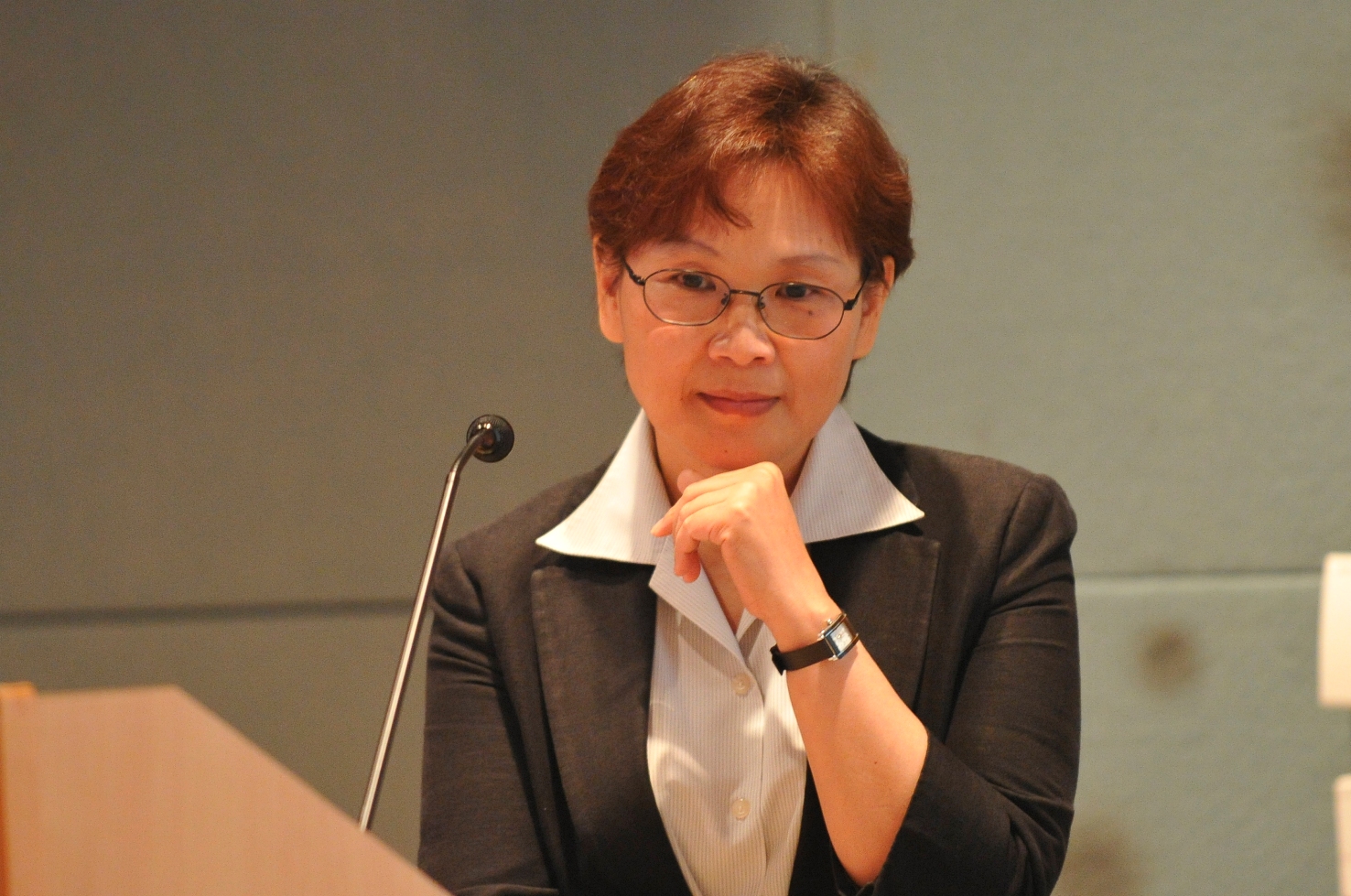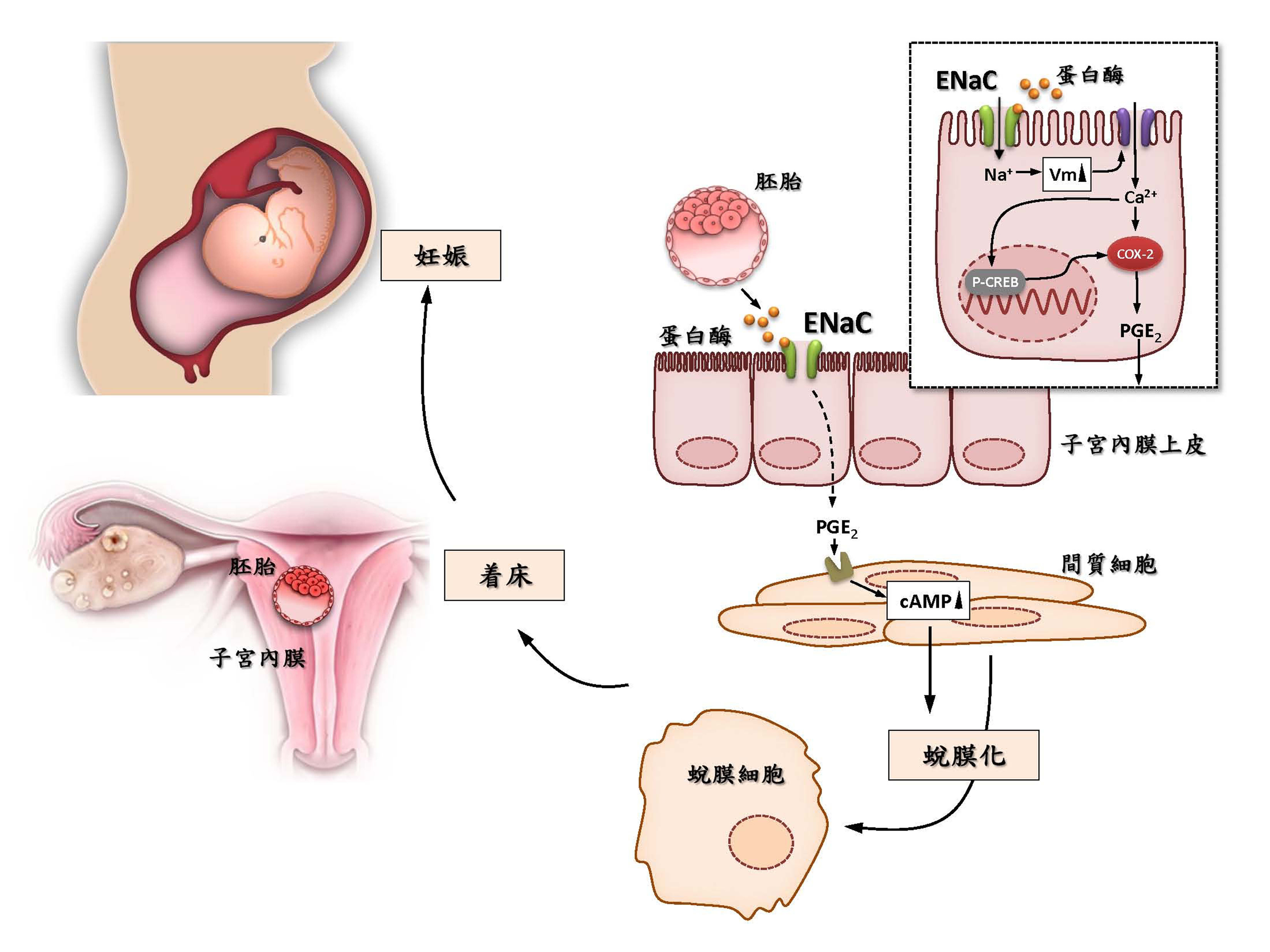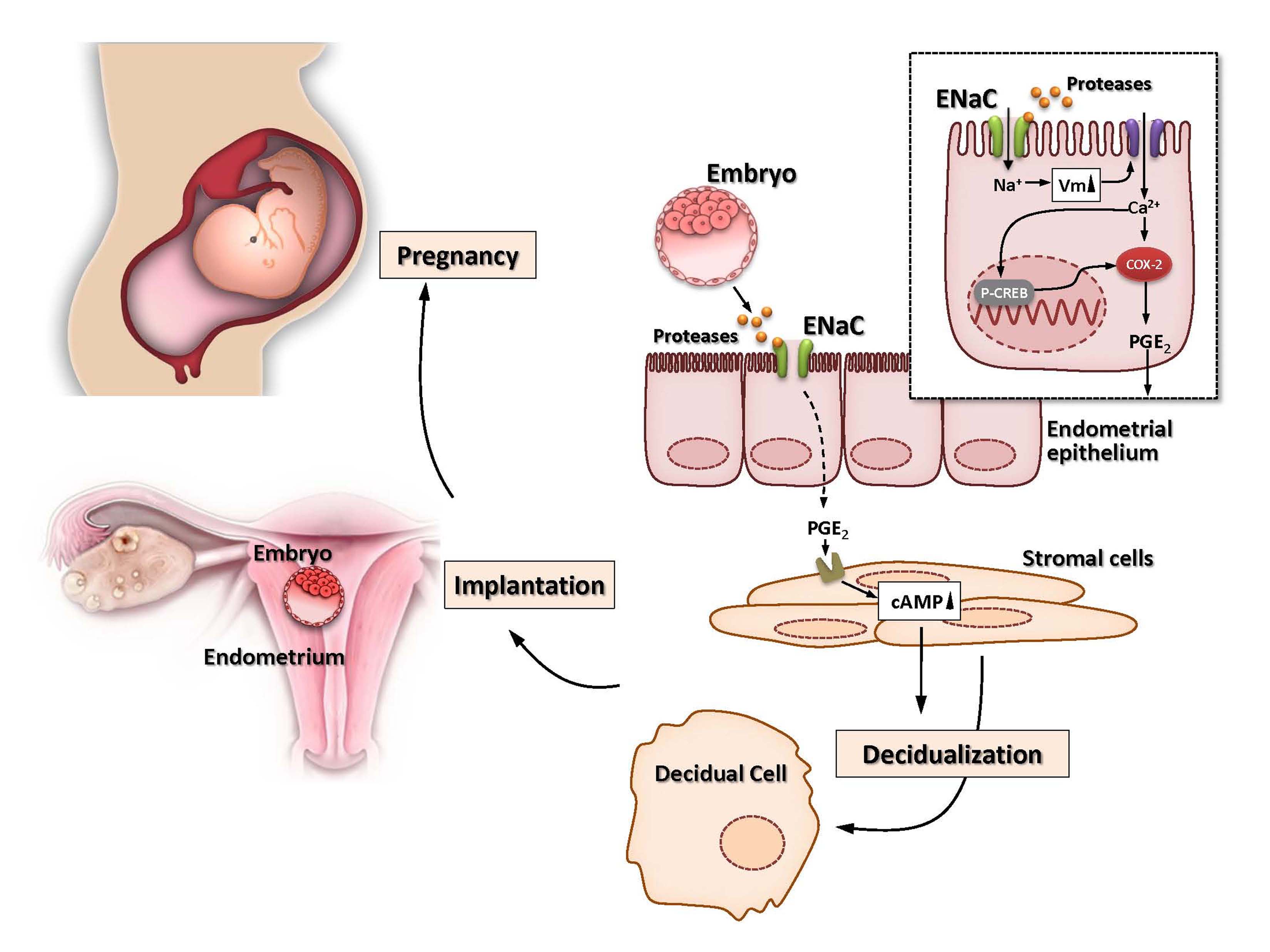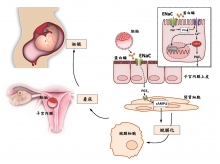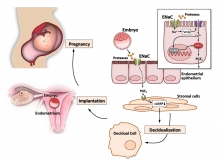CUHK
News Centre
CUHK Research Solves Long-standing Mystery of Human Reproduction Unveiling New Page for Diagnosis of Infertility
The research team led by Prof. Chan Hsiao Chang, Li Ka Shing Professor of Physiology and Director of Epithelial Cell Biology Research Centre at The Chinese University of Hong Kong (CUHK), has discovered the important role of the epithelial Na+ channel (ENaC) in embryo implantation. The findings do not only solve one of the long-standing mysteries surrounding human reproduction and shed new light on the cause of miscarriage and low successful rate in in vitro fertilization (IVF), but also provide a novel method for diagnosis of infertility and target for contraception. The research was just published in the latest issue of Nature Medicine, one of the most influential high-impact journals in the medical field worldwide.
The attachment of the embryo to uterine epithelium followed by the so-called decidualization process in the stroma beneath the epithelium is a prerequisite for successful pregnancy. However, embryo implantation remains a poorly understood process. In particular, it remains unclear how signals, either physical or chemical, from the embryo at the uterine surface are converted into chemical signals leading to decidualization in the stromal cells that do not have direct contact with the embryo.
Professor Chan said, ‘We discovered that ENaC expressed in the uterine epithelial cells can be activated by protease released by the implanting embryo, which in turn triggers a sequence of events that lead to enhanced production and release of prostaglandin E2 (PGE2), a key factor involved in implantation. Interestingly, we also found that uterine ENaC expression levels prior to IVF treatment are significantly lower in women with implantation failure as compared to those with successful pregnancy.’
Professor Chan’s team is at the forefront of epithelial cell biology research related to reproduction, having made numerous major discoveries on molecular mechanisms regulating fertility and causes of infertility. Her significant contribution to the field has brought her a host of prestigious awards, including the Cheung Kong Achievement Award (2007) and State Natural Science Awards (1997, 2008).
Professor Chan obtained her B.S. degree in Bioengineering in 1983 and Ph.D. degree in Biophysics in 1988 from the University of Illinois, Urbana-Champaign. She worked at the University of Chicago as a postdoctoral fellow before she took up a faculty position as Assistant Professor at CUHK in 1993. She was promoted to Professor of Physiology in 2006. She sits on many editorial boards and also holds visiting professorship at over 14 universities or institutes in mainland China. Professor Chan has also been invited to review grants for a number of funding agencies worldwide, including WHO, Wellcome Trust (UK), German Cystic Fibrosis Association, Italian Telethon Foundation, National Natural Science Foundation of China and National Science Foundation (USA).


